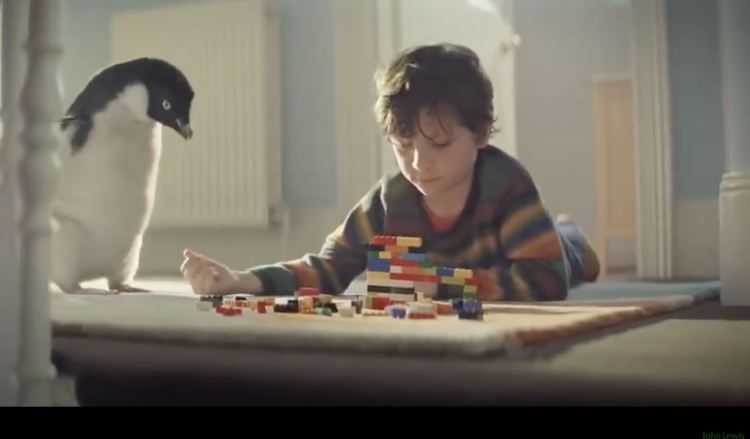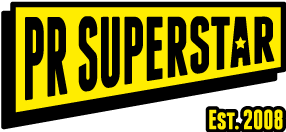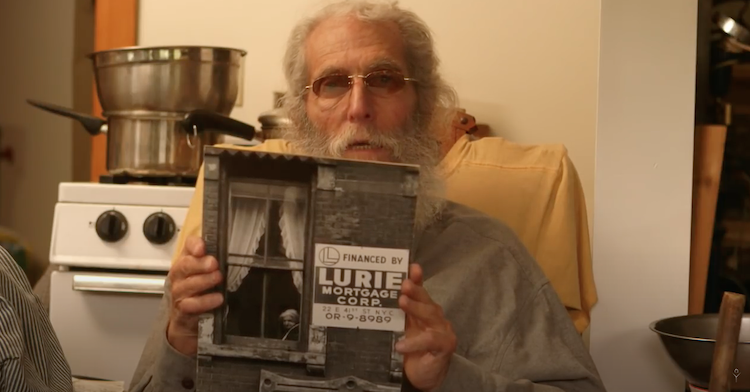
The Power of PR Storytelling
Human beings are natural born storytellers. We’ve been telling stories as a way to connect, entertain and pass on information since the beginning of time. And stories are still at the centre of all that we do and say today. From the anecdotes we share with our friends, to the bedtime tales we tell our children, stories help us forge connections and build meaningful relationships.
But stories aren’t just for bedtime. They have a firm place in business too.
This is where PR storytelling comes in.
What is PR storytelling?
Every business has a story to tell, whether it’s the unique way the business was launched, the way a revolutionary product was invented, or the exemplary way in which a business serves the local community.
PR storytelling is about attracting the attention of the media by telling that story in an engaging and thought-provoking way.
The importance of good storytelling in PR
PR storytelling is a powerful tool for marketers to communicate information, influence opinions and build trust. Here are three reasons why.
PR storytelling lights up the brain
If you think facts and sales figures are the way to win over the media, think again. As science has proven otherwise.
As this article by the New York Times explains, stories light up parts of the brain that statistics fail to stir.
When we consume uninteresting information, like a presentation packed with charts and graphs, a certain part of our brain called the Wernicke’s area is activated to translate the information into meaning. But when we hear a story, lots of areas of the brain light up, including the parts we would use if we were experiencing the events of a story ourselves. It can cause us to develop thoughts, opinions, and ideas that align with the person telling the story.
This makes PR storytelling an incredibly powerful tool for marketers.
PR storytelling humanises a brand
It’s a well-known fact that people buy into people, not products. By sharing stories about your business and the people behind the scenes, it gives your brand personality, making it easier for people to know who you are, and to understand your values and trust you.
Unfortunately, a lot of brands focus on selling product features rather than brand stories and miss out on the opportunity to make authentic connections with customers and the media.
PR storytelling gives you a competitive edge
Brands that excel at PR storytelling stand out from the competition. Take Apple and John Lewis for example. There are plenty of tech brands and department stores out there. But these two brands have cornered the market in their respective niches. Why? Because they have invested in PR storytelling to differentiate themselves.
As a result, every time Apple launches a new product, or John Lewis launches one of their highly anticipated Christmas ads, they send the public and media into a frenzy.
Five examples of storytelling PR campaigns
These are just three of the many benefits of harnessing the power of storytelling in PR. Now let’s take a look at five brands that excel at it:
Skype
Skype is a popular video chat application, used around the world. Despite the product’s many technical capabilities and features, the PR team know better than to simply list them in their marketing campaigns. Instead, they use PR storytelling to market the product as a tool that brings people together.
Each of their campaigns shows how the platform enables families, friends, and colleagues to connect.
Here’s an example from their 2014 ‘Stay Together’ campaign, about a Ugandan man who kept in touch with a family left behind when war caused him to escape the country and start a new life in America.
The emotive campaign, which features a series of emotionally charged videos in a similar vein, did not involve paid media, but earned them a load of free coverage and empathetic new fans.
Burt’s Bees
Burt’s Bees is a skin and body care brand that sells a range of natural products made of beeswax.
Masters of PR storytelling, they market themselves as a an environmentally conscious brand that promotes living simply, naturally, and responsibly.
A large component of their storytelling focuses on company founder, Burt Shavitz, and how his philosophies on life and his nomadic lifestyle influence the products they make.
Through a series of quirky videos, we get to know the man behind the brand. For example, this feature length documentary sees Burt talk about his simple, holistic lifestyle, his passion for beekeeping, and how he turned his passion into a thriving business.
The brand has also created a series of videos titled ‘Burtisms’, which feature fun musings and pearls of wisdom from the former beekeeper.
This is clever PR storytelling, as putting a name and face to a brand creates familiarity and trust. At a time when transparency means everything, the honest and open way in which the brand tells its stories helps it create a genuine connection with the people who buy its products.
Airbnb
Since launching in 2008, PR storytelling has been at the heart of Airbnb’s marketing efforts. The brand, an online marketplace where people can rent out rooms to holidaymakers, uses powerful PR storytelling to tap into people’s wanderlust.
For New Year’s 2015, the company told one of its stories with a striking animated video, full of interesting facts. The brand said that one million travellers had spent New Year’s Eve in one of their rental homes, in one of 17,500 cities in 150 countries around the world.
The advert went on to promote the best destinations to visit for couples, the elderly and families.
New York topped the list of the most popular place for Airbnb guests to ring in the New Year, with 47,000 travellers.
This is a great example of how a brand can use data to tell engaging stories. And it raises an interesting point: stories trump stats. According to content in Forbes’ article ‘A Good Presentation is about Data and Story’, American psychologist Jerome Bruner suggests that stories are up to 22 times more memorable than facts alone. That’s a significant amount.
The lesson is, if you have some impressive numbers to share, great. But be sure to do as Airbnb did, and package them up in a compelling story, for maximum effect.
Disney
Entertainment brand Disney is no stranger to PR storytelling, and this adorable advert for Disneyland Paris is a perfect example.
The heart-warming story centres around a cute duckling, who finds a Donald Duck comic book and becomes obsessed with the iconic fluffy character. However, bad weather sets in, and the duckling and his family have to flee, leaving his beloved comic book behind.
The next morning, the sun reappears, and the duck family arrive at Disneyland Paris, where the duckling is greeted by the real Donald Duck. The moment when the duckling comes beak-to-beak with his idol is magical.
Through this moving display of anthropomorphism, Disney captures the magic and excitement that children feel for Disneyland.
Apple
Technology brand Apple has storytelling down to a fine art. The late co-founder, Steve jobs was arguably the world’s greatest business storyteller. He transformed every product launch and keynote speech into a theatrical production, complete with sets, props, and music. His stories worked people into a frenzy, to the point where fans would camp overnight to get their hands on the latest product, and journalists would work through the night to be the first to publish a review.
As well as their awesome product launches, Apple uses PR storytelling to great effect in their marketing campaigns. Take ‘Détour’ for example. The charming, 11-minute film by Oscar-winning director Michel Gondry, follows the adventures of a child’s tricycle that becomes separated from its young owner.
The campaign stands out for two reasons: the heart-warming story is beautifully crafted and engaging to watch. It also perfectly demonstrates the many features of the iPhone, such as underwater filming, time-lapse and slow motion, as it was shot entirely on the iPhone 7 Plus.
If you can tell a brilliant story while showing off the unique benefits of your product or service, you’re on to a winner.
Six handy PR storytelling tips

These brands stand out because of their brilliant PR storytelling. Here are six top PR storytelling tips to help you do the same.
Make em’ laugh (or cry)
American writer Maya Angelou once said, ‘people will forget what you said, people will forget what you did, but people will never forget how you made them feel.’
Therein lies the power of storytelling. It evokes emotion. A prime example of a brand that excels at this is John Lewis. Renowned for its heart-wrenching Christmas PR campaigns, the brand tells its stories through music and emotion. In fact, the ads are so powerful that numerous blogs, articles and newspapers dedicate pages to speculating what the next year’s ad will bring.
Make your audience laugh or cry and you’ll create PR storytelling gold.
Be authentic
PR storytelling tip number 2 is be authentic. Today’s consumers can spot brands that are inauthentic a mile off. And it turns them off. Instead use stories about real people that have actually used your product or service, or stories about the humble origins of your brand. When a brand story is honest, it’s more believable and easier to connect with.
Take baby food brand Ella’s Kitchen. The founder, Paul Lindley, crafted the entire brand on the authentic story around his personal experience of trying to get his daughter to eat healthily. He had a vision to create a world for kids filled with fun and experimentation. It works as it’s an inspiring story, based on his personal experience. And it taps into the emotions of parents across the world.
Bring your story to life
Live experiences can take your story to the next level. So, if you’re telling a story about being adventurous, you should be engaging with customers and the media in a way that shows them you are. Think about Red Bull. The brand image is one of adventure, extreme sports, and freedom. And its PR and marketing campaigns encourage people to live the Red Bull brand lifestyle. From its World of Red Bull commercial series to Felix Baumgartner’s 128,100-foot space jump, the brand involves the audience in the experience, which drives emotional connections and reinforces the message.
Don’t just say it, prove it
It’s one thing to say you have a great company, product, idea or cause, but it’s another to demonstrate why that’s true. When crafting your story, be sure to have data to back it up. Use statistics, research findings, surveys, testimonials, or other data to provide depth to your story, verify your claims and demonstrate how your product fills a need. Cold hard facts can often be the key to getting people interested. Just remember to package them up in your story.
Don’t forget the news
For the most part, your story will only be of interest to a journalist if you can tie it to news that’s relevant to readers. Be sure to work current events into your story to make it more newsworthy.
Use a variety of platforms
For the most effective storytelling, you’ll want to utilise a variety of platforms, and present the content in multiple ways. You can promote your stories across social media, your website, blogs and more. Using a mixture of video, audio, images and text will provide the most dynamic user experience and encourage interactivity from your audience.
The bottom line
Everyone loves a good story, because our brains are programmed to. If you tell yours effectively, it’ll pay dividends. So, it’s time to put pen to paper. Great PR storytelling can create brand fans, generate media coverage and ultimately, improve your bottom line.







